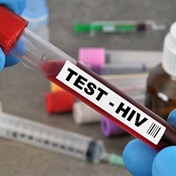US doctors say they have saved a seven-year-old girl who was close to dying from leukaemia with a pioneering use of an unlikely ally: a modified form of the HIV virus.
After fighting her disease with chemotherapy for almost two years and suffering two relapses, the young girl "faced grim prospects", doctors at Children's Hospital of Philadelphia said.
So in February this year they agreed to take her on in an experimental programme that fought fire with fire.
Helped by a genetically altered HIV virus - stripped of its devastating properties that cause Aids - doctors turned the girl's own immune cells into a superior force able to rout the "aggressive" leukaemia.
The treatment of Emily Whitehead was one of the very first of its kind and cannot yet be considered "a magic bullet", the hospital said. But in Emily's case, it apparently worked completely.
First, millions of the girl's natural immune system cells were removed. Then the modified HIV virus was used to carry in a new gene that would boost the immune cells and help them spot, then attack cancer cells that had previously been able to sneak in "under the radar", the hospital said on its website.
Finally the rebooted immune cells were sent back in to do their work.
"The researchers have created a guided missile that locks in on and kills B cells, thereby attacking B-cell leukaemia," the hospital said.
Paediatric oncologist Stephan Grupp, who cared for the girl, explained on Tuesday that there was never any danger of Aids during the process.
"The way we get the new gene into the T cells (immune cells) is by using a virus. This virus was developed from the HIV virus, however all of the parts of the HIV virus that can cause disease are removed," he said in an e-mail.
"It is impossible to catch HIV or any other infection. What's left is the property of the HIV virus that allows it to put new genes into cells."
'No leukaemia in body'
During the treatment, Emily became very ill and went into the intensive care unit, underlining how risky the procedure can be. However, drugs that partly block the immune reaction were administered, without interfering with the anti-leukaemia action, and she recovered, the hospital said.
The result was "complete" and best of all, the doctors say, the boosted immune shield continues "to remain in the patient's body to protect against a recurrence of the cancer".
"She has no leukaemia in her body for any test that we can do - even the most sensitive tests," Grupp told ABC television. "We need to see that the remission goes on for a couple of years before we think about whether she is cured or not. It is too soon to say."
Grupp said on the Children's Hospital of Philadelphia website that cell therapies might eventually replace the more costly, painful bone marrow transplant treatment, a standard last-ditch defence against cancer.
"I've been meeting with families to discuss bone marrow transplant for 20 years," he said. "In almost every meeting, I say that bone marrow transplant is very hard and that if we had an alternative for children at that point in treatment, I would be delighted to put myself out of business. And for the first time, we're seeing how that might actually happen."
(AFP, December 2012)
Read more:
Behaviour reduces HIV spread
Cancer in children




 Publications
Publications
 Partners
Partners










